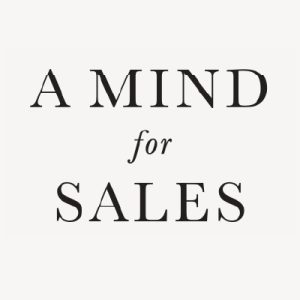 Are you asking customers to buy or to invest?
Are you asking customers to buy or to invest?
Think about that question for a moment. First think about what the question means and then how you would answer it, based on your approach to selling.
Customers don’t want to buy anything.
Buying means they’re giving somebody money and receiving something in exchange. Sure, it’s something we do, both in our personal life and our professional life.
However, think about what you buy. Are you buying or are you investing?
Regardless of what you’re buying, you’re really investing. We buy things because we want some benefit out of what we bought. That’s investing!
Now let’s shift this to the selling process.
When we take the approach of asking the customer to invest rather than buy, it shifts our thinking and our selling technique.
When we focus our mind on showing the customer the virtues of investing with us, we are far more inclined to uncover the customer’s needs and desired outcomes.
Conversely, when we are focused on the customer simply buying, we are far more likely to sell our product’s features and push those features, even to the extent of ignoring the benefits the customer really desires.
You should drive every sales call with the sole purpose of getting the customer to invest.
Put the “buying mentality” away. It doesn’t have a place in today’s marketplace, whether it is B2B or B2C.
Customers are looking for a benefit out of everything they buy. In fact, a customer will buy anything at any price – even at an amazingly high price – if they feel the benefit they’re going to receive is greater than the money they’re investing.
The concept is easy to understand.
Present more value than the customer is investing and you have a sale! Everything you say should be geared to helping you understand what the customer wants with regard to benefits, needs and desired outcomes.
This approach means you ask questions that allow the customer to share their needs and desired benefits. Then you ask follow-up questions that get them to build upon what they have shared.
Develop your questions when preparing your presentation, and then use them at the beginning of your first meeting with your customer.
This approach is totally different than if you are just trying to figure out how to get the customer to buy. If you were using the buying approach, you would likely start the call extolling the features of your product or service and the great capabilities of your company.
Of the above two approaches, which do you think the customer would be more likely to engage in? Definitely the approach that involves questions!
As you engage the customer with questions, you not only discover their needs and desired benefits, you also have an opportunity to understand the urgency and severity of what they have shared.
Customers will share with you what they want, but that in and of itself is not good enough. The customer has to fully explain the magnitude of their needs.
Sometimes they don’t even understand the magnitude of their needs until you get them talking, but this is where your big money is made.
Needs and desired outcomes all take on different levels of importance, and when you add the elements of risk and time, you have the ability to create a significant reason the customer should invest with you.
Use what the customer shares with you as the guiding point as to what to ask them next. The customer will guide you if you ask the right questions, and they will build upon what they shared with you.
Shifting your focus to getting customers to invest with you is both a mind-set and a process, but it’s one that every salesperson should embrace. The reason is simple. Your ability to close more sales and at a higher price is significant with this approach.
Customers who are investing are far more pro-active in making a decision than customers who are merely buying.
If you want to keep playing the “selling features” game, go right ahead.
But don’t go complaining when the customer pushes back on not only making a decision, but also on wanting a discount.
Copyright 2014, Mark Hunter “The Sales Hunter.” Sales Motivation Blog. Mark Hunter is the author of High-Profit Selling: Win the Sale Without Compromising on Price.





I love the bit about investing, it changes the whole ball game and i think people will also view their investment decision in a different light.
thanks. really good. its a ahhh moment. paradigm shift.
I like it Mark. The other day I wrote an email that said something to the effect of, “this will be the best investment of 2014 for your team.” Don’t know if its borderline too cheesy. But I’ll find out on our call Monday.
Ian